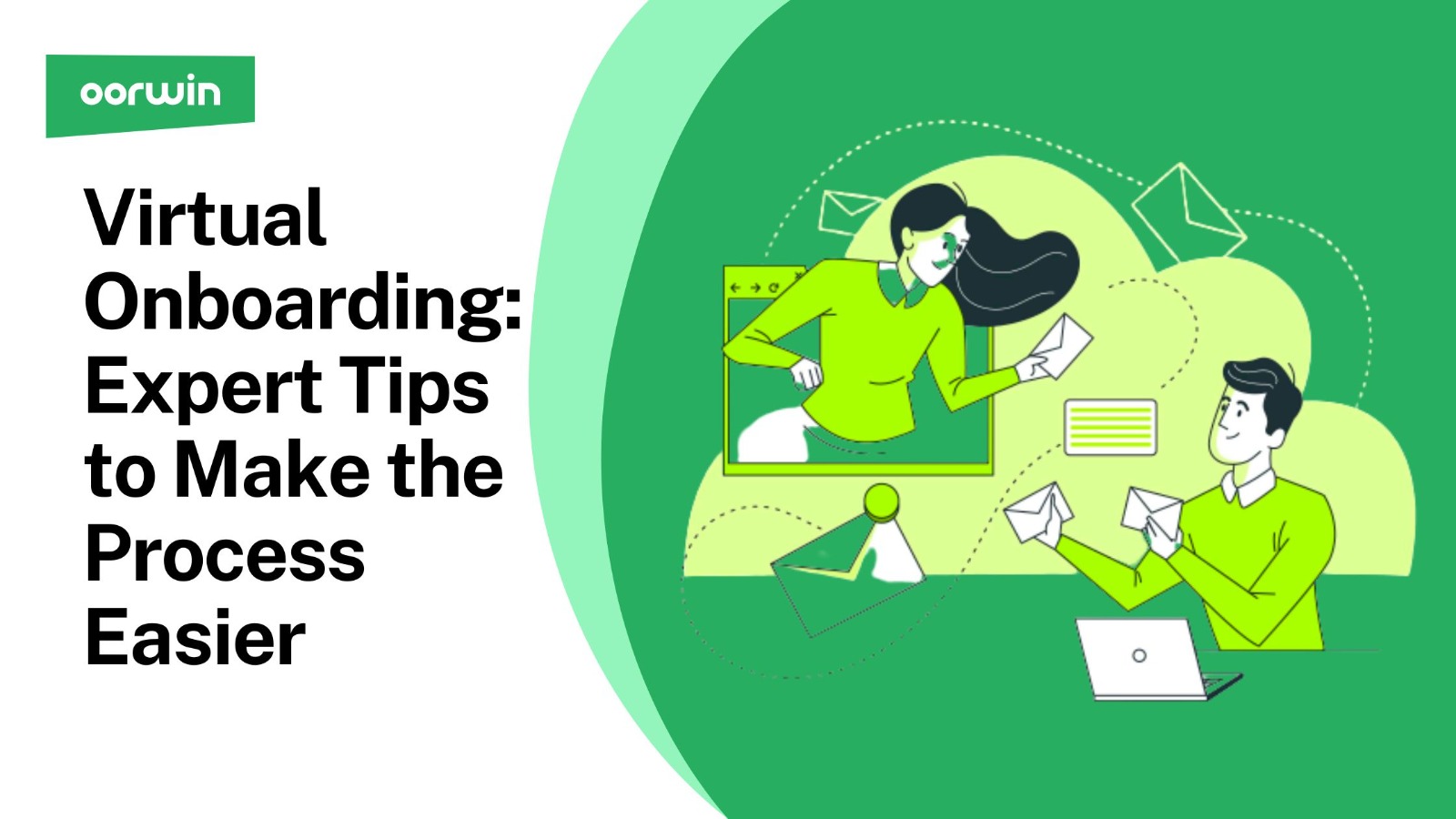Virtual Onboarding: Expert Tips to Make Onboarding Easier
Oorwin
10min read / 9 Mar 2023

Related Articles
What is a Virtual Onboarding Process?
Virtual onboarding is the process of welcoming, training, and integrating new employees into a company using virtual technologies such as video conferencing, emails, and other online tools. With remote work becoming more common, virtual onboarding has become necessary for companies looking to onboard new hires effectively.
Researches have found that a poor onboarding process increases the chance of a candidate leaving the company earlier and looking for another option. A successful process can help new employees feel comfortable in their new roles, understand the company culture, and feel connected to their colleagues.
Strategies for Effective Virtual Onboarding Process
As remote work becomes more common, virtual onboarding is becoming an increasingly important process for organizations to get right. Effective strategies can help new hires feel welcome and set them up for success while also improving retention rates and overall company culture.
Start Early
Starting the virtual onboarding process early is essential. Before the new employee’s first day, email them their work schedule, a list of tools and software they will need to use, and any other important details they need to know. This will give them enough time to familiarize themselves with the company’s processes and tools.
Provide Clear Instructions
Clear and concise instructions are vital for the success of virtual onboarding. When providing instructions, make sure they are easy to understand and follow. This will help new employees feel confident in their ability to complete tasks and avoid misunderstandings.
Use a Variety of Communication Channels
Using a variety of communication channels can help new employees feel connected to their colleagues and the company culture. In addition to email and instant messaging, consider using video conferencing tools such as Zoom, Google Meet, or Skype. This can help new hires feel more involved and connected to their colleagues, even when they are working remotely.
Assign a Mentor
Assigning a mentor to a new employee can help them feel supported and valued. The mentor can answer questions, provide guidance, and act as a sounding board for the new employee. The mentor can also help the new hire feel more comfortable in their new role and help them understand the company culture.
Fun Virtual Onboarding Games and Activities
Virtual onboarding games and team-building activities effectively help new employees feel connected to their colleagues and the company culture. From virtual scavenger hunts to online trivia contests, these games foster team bonding and make new hires feel welcome. They not only lighten the mood but also facilitate learning about company culture and values in an enjoyable way as well as help new employees feel like they are part of the team, even when they are working remotely.
Offer Virtual Team-building Activities
Virtual team-building activities effectively help new employees feel connected to their colleagues and the company culture. Activities like virtual happy hours, trivia games, or team lunches can help new employees feel like they are part of the team, even when they are working remotely.
Schedule Regular Check-ins
Regular check-ins are essential to ensuring that the virtual onboarding process is successful. Scheduling weekly or bi-weekly check-ins with the new employee can help identify any challenges they are facing and address them early. This can also help the new employee feel more supported and connected to the company.
Get Feedback
Getting feedback from new employees can help improve the process. Ask new employees about their experience with the onboarding process and what could have been improved. This can help identify areas that need improvement and ensure that future new hires have a better experience.
Take your Virtual Onboarding Process up a Notch with Oorwin
Oorwin is a talent management platform that can help streamline the onboarding process. With Oorwin, companies can automate onboarding, assign tasks and activities to new employees, and track their progress. It can also help companies create a personalized onboarding experience for new employees, which can help them feel more valued and engaged.
Frequently Asked Questions
How does virtual onboarding differ from traditional onboarding?
Virtual onboarding differs from traditional onboarding by using virtual technologies such as video conferencing, emails, and other online tools. Traditional onboarding is done in person, and new employees meet with their colleagues and managers face-to-face.
What are the benefits of virtual onboarding?
Virtual onboarding offers several benefits, including flexibility, convenience, and cost-effectiveness. Virtual onboarding also allows new employees to work remotely, which can help them achieve a better work-life balance.
What types of technology are typically used in virtual onboarding?
Typically, virtual onboarding utilizes video conferencing, email, instant messaging, and virtual document-sharing platforms to train, welcome, and integrate new employees into a company.
Popular Articles..
Blog

9min read / 25-Jun-2025
Master Effective Interview Techniques with Oorwin: A Step-by-Step Recruiter’s Guide
Blog
Blog
Get the latest Oorwin releases, updates, success stories & industry news
 Back
Back
